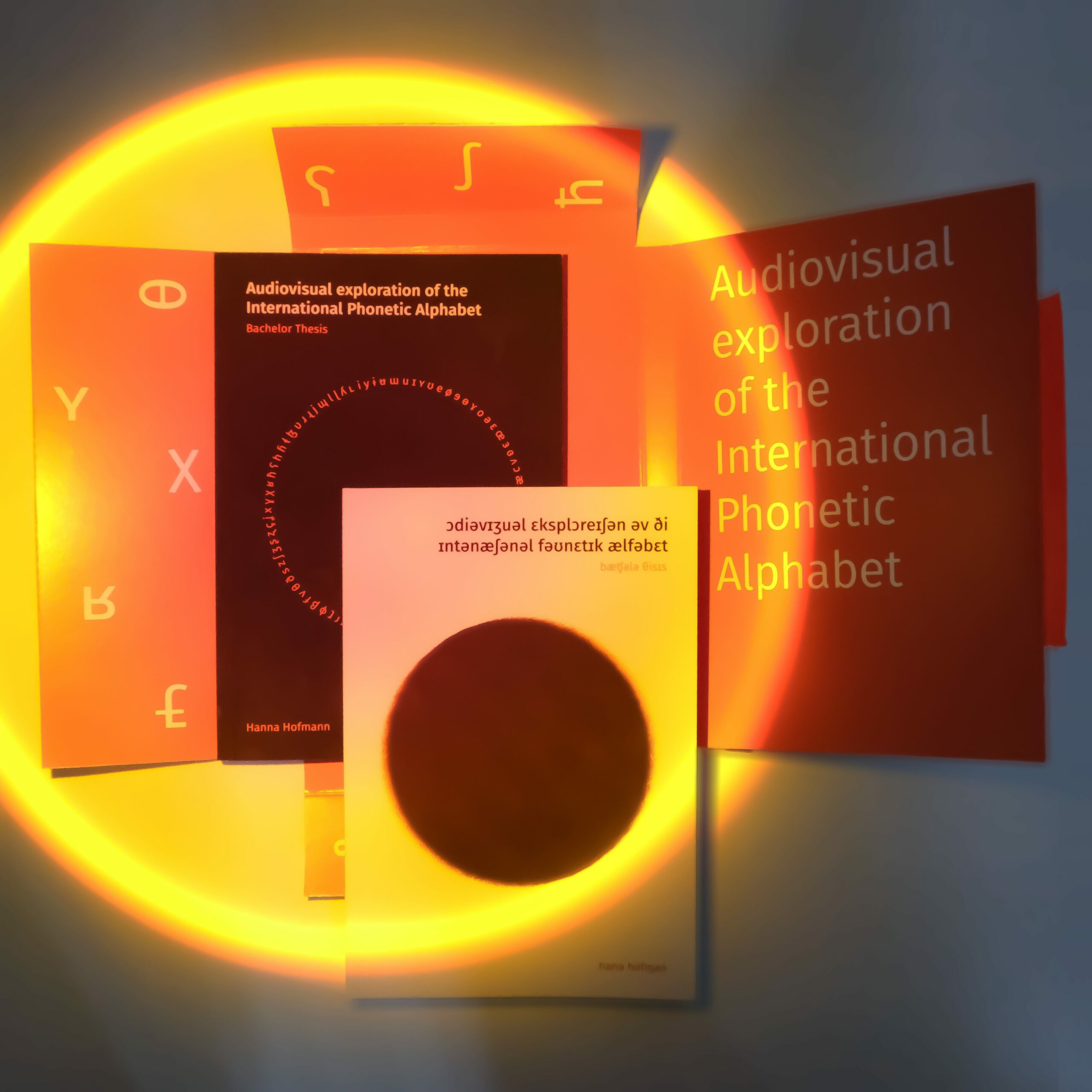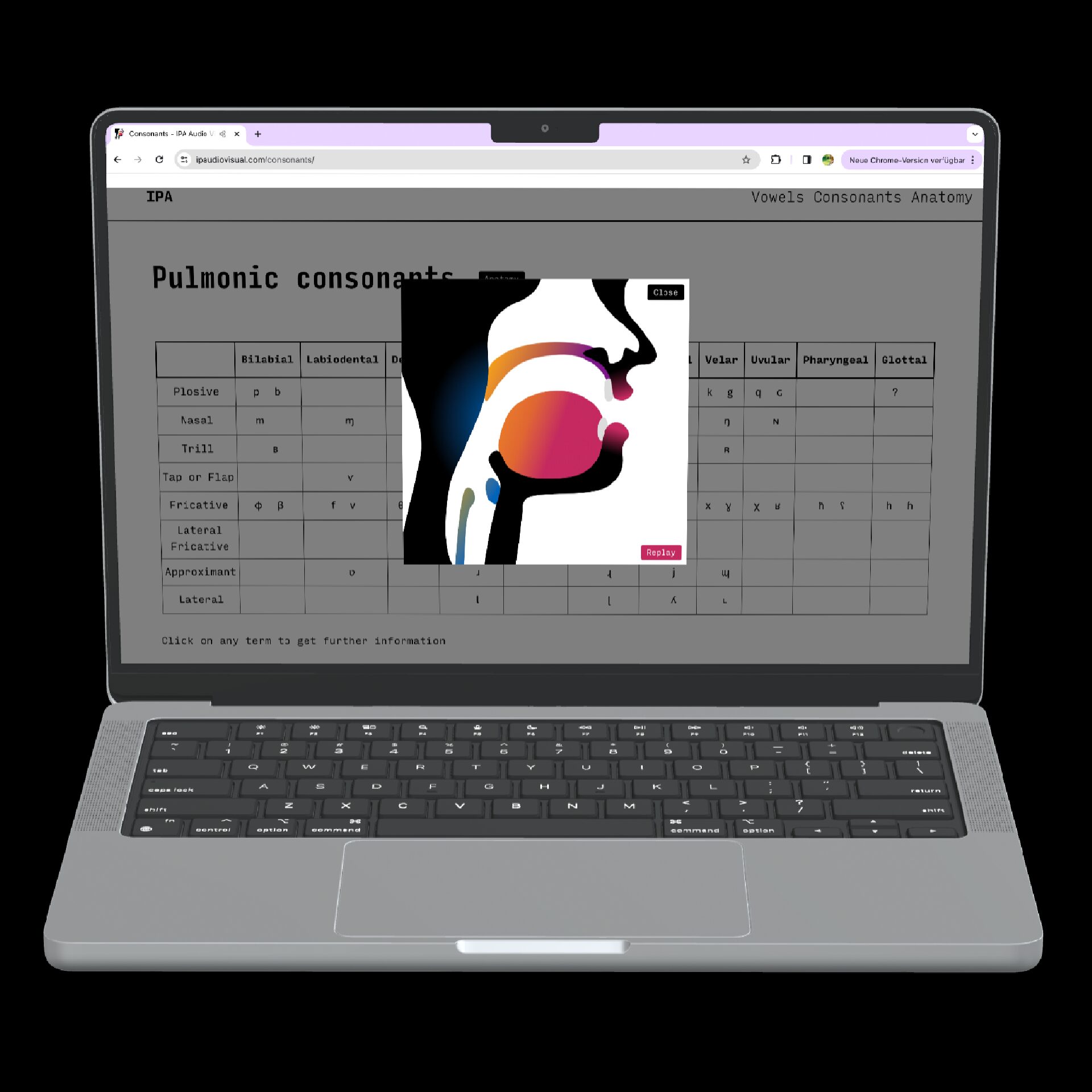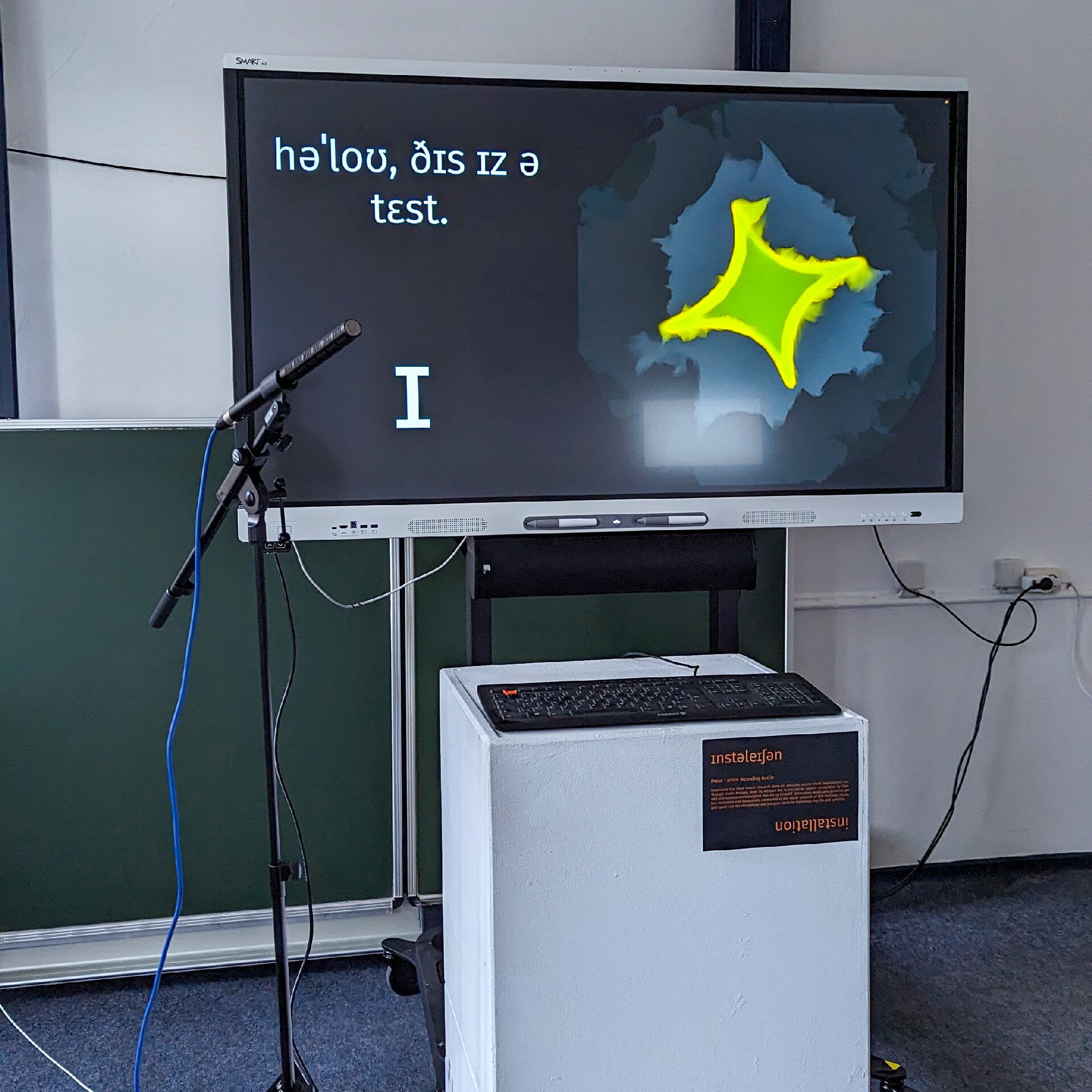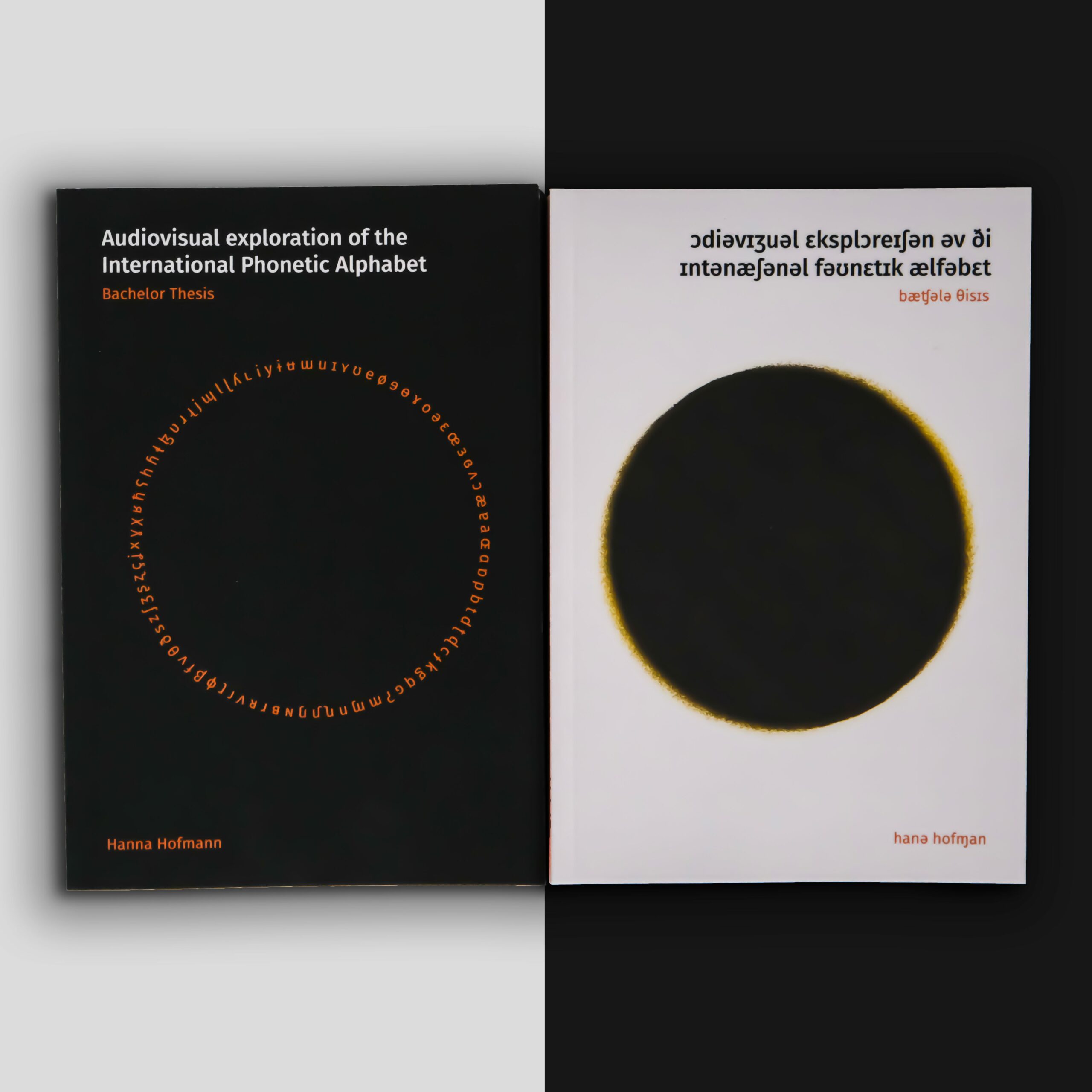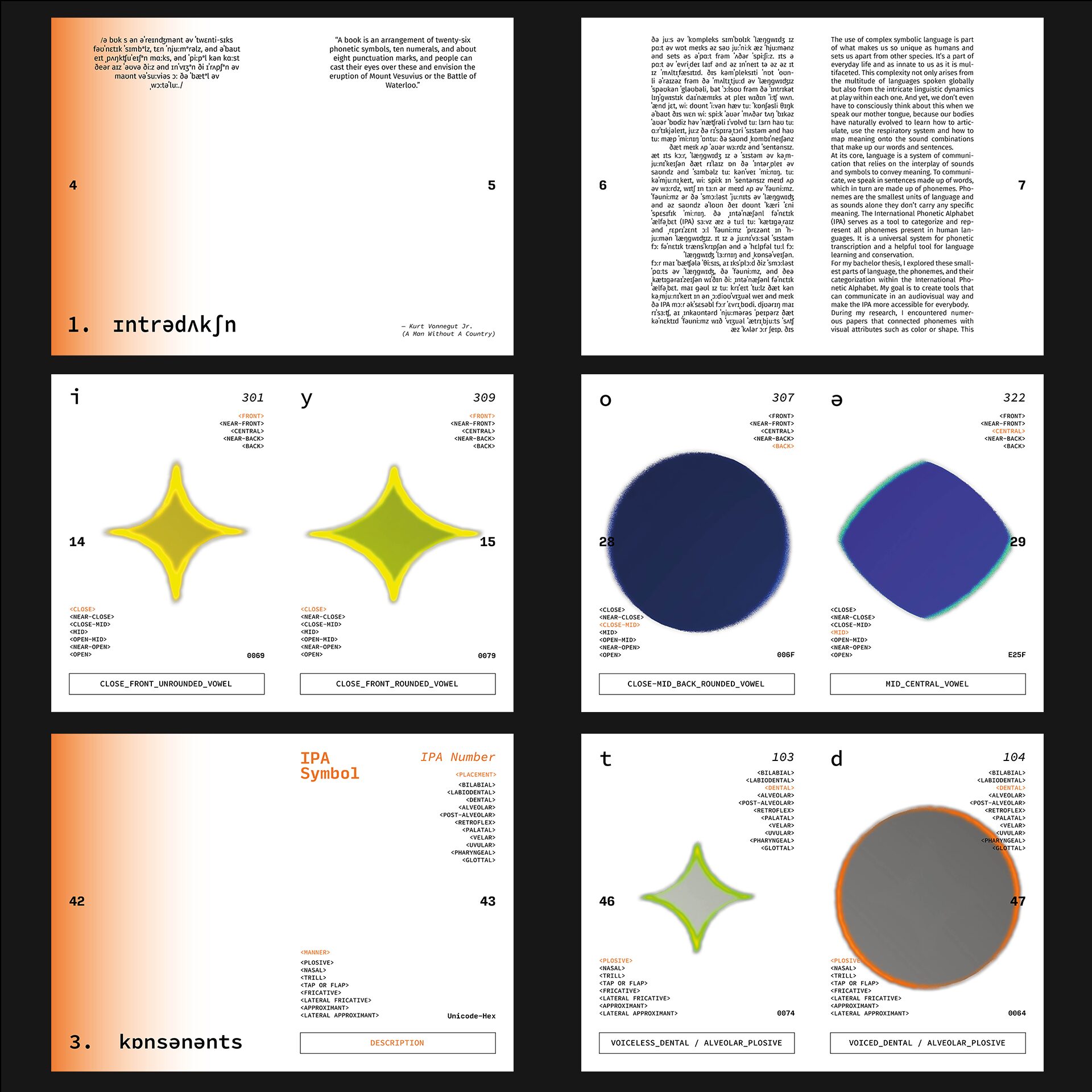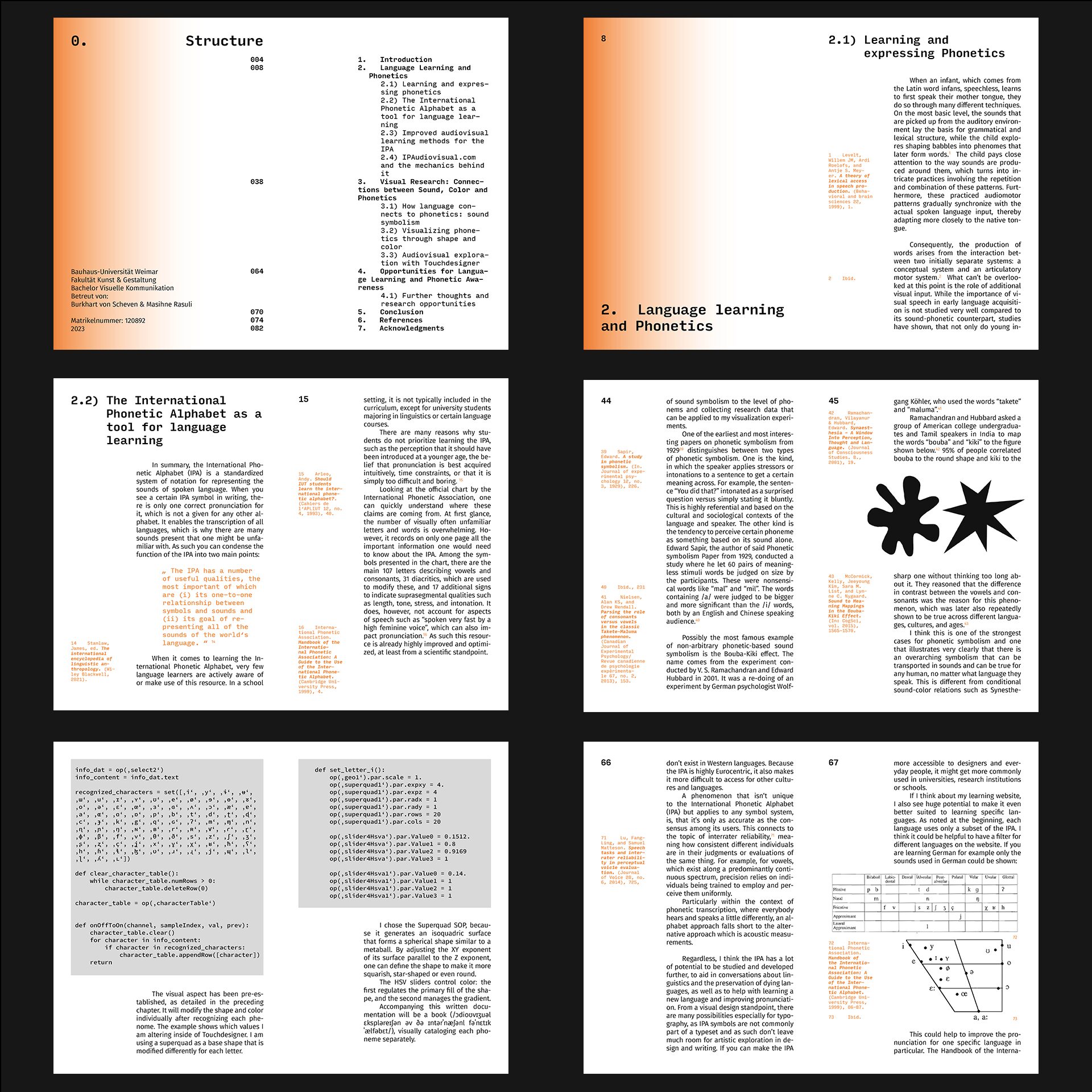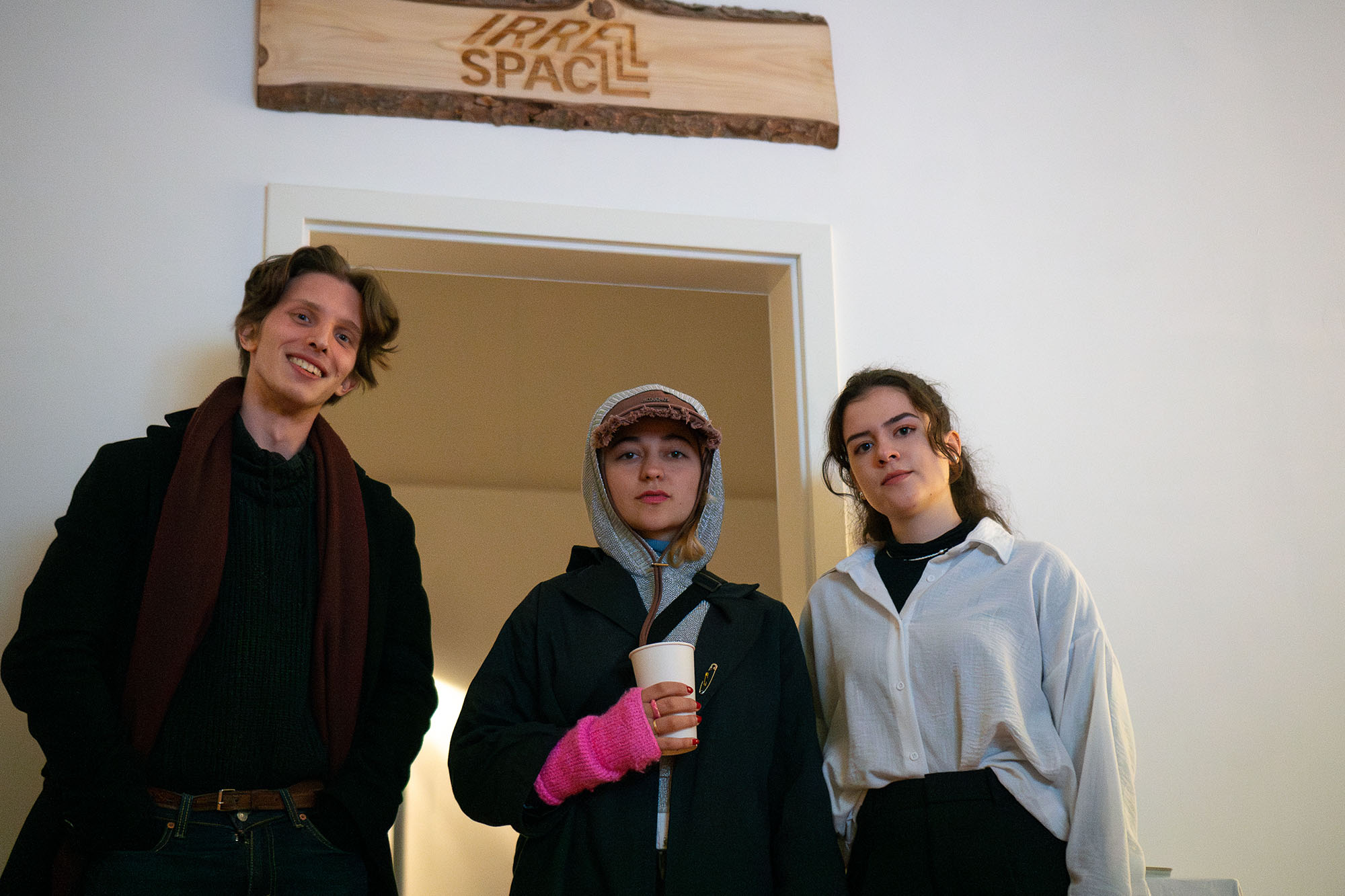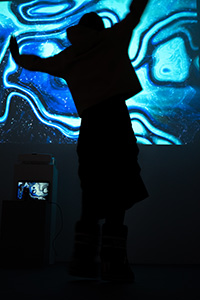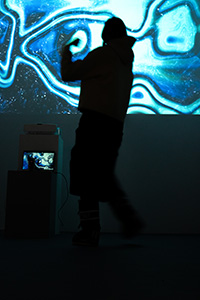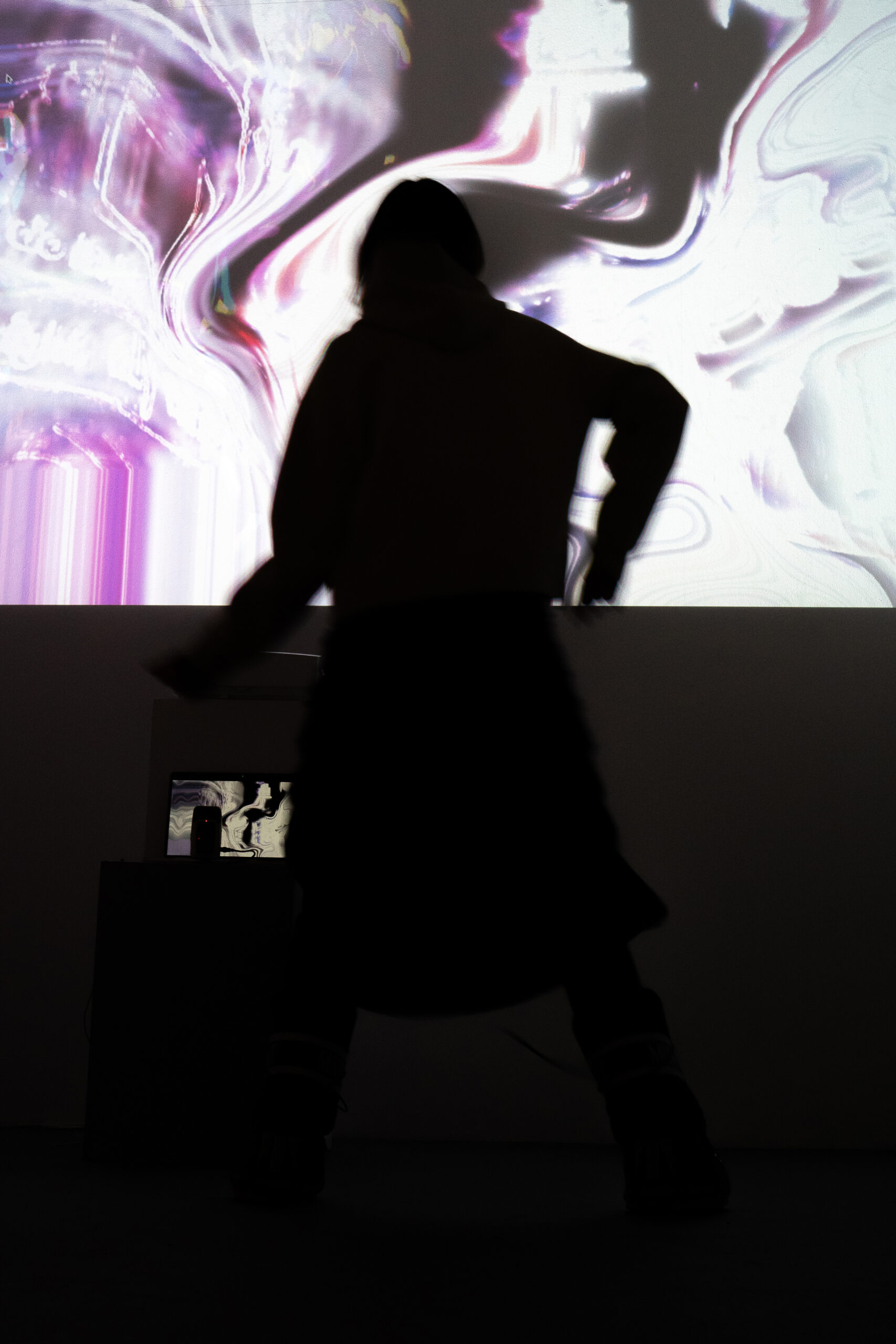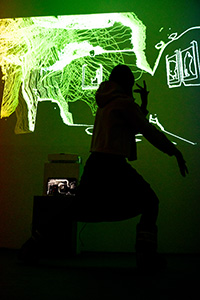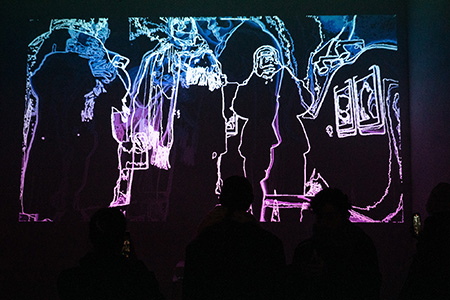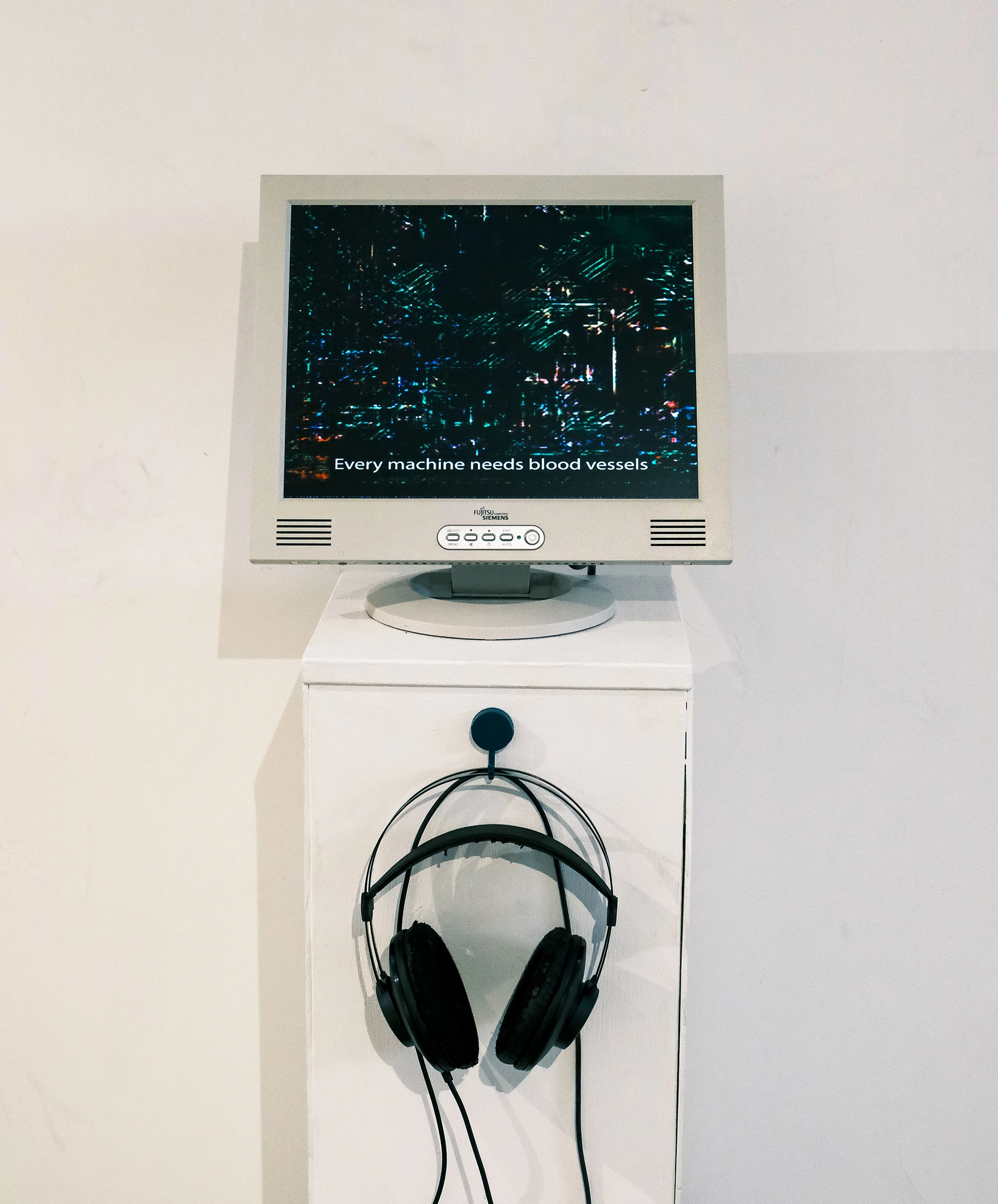
Hanna Hofmann
Works
Ueno_Syndicate
CV
Contact
This is a performance piece , which was part of the exhibition: Crossing Spaces – An Immersive Performance Exhibition by Ueno_Syndicate In my bachelor thesis, I focused on the International Phonetic Alphabet (IPA), which documents all the sounds found in human languages worldwide. Unlike other alphabets, such as the Latin alphabet, the IPA offers a unique way to represent pronunciation in written form. By exploring audiovisual concepts, complex relationships between language, phonetics, and visual representation are illustrated. This installation delves into the interplay between natural light and artificial light. The idea stems from my day and night experiences in Tokyo since the city that never sleeps is a big contrast to my home village in Bavaria, where we don’t even have street lights at night. Night light to me meant a starry sky and the serene light of the moon on a cloudless night, whereas in Tokyo the city was alive as night bustling with activity and different sounds. I worked with Touchdesigner to create different light patterns, based on the city and the night sky respectively. Through interaction with the installation, visitors can subtly influence its movements, interacting with the light itself. Conversely, by generating sound, such as clapping or making noise, one can explore the different visual realms within the installation. This juxtaposition allows for an immersive experience where the interconnection between calm rural environments and the vibrant, energetic ambiance of the city is palpably experienced and controlled by the audience. The Installation was shown at the Toride Geisai Festival during my stay in Tokyo, and again in Weimar at the Irre Space, Curated by Marke 6.
„Die Deutsche Bahn fährt immer” is a multimedia artwork that channels personal experiences and frustrations with the German railway system into a visually and aurally compelling project. Utilizing advanced 3D rendering techniques in Blender, the piece combines intricate visual models with a meticulously designed soundscape. The video composition, achieved through Touchdesigner and Premiere, seamlessly integrates these elements, creating an immersive experience for the viewer. This project not only serves as a creative outlet but also as a testament to the artist’s technical proficiency and innovative approach to digital art. „Komurebi” is a group exhibition by seven exchange students from the Tokyo University of the Arts. Later these students would form the art collective UENO_Syndicate.
Through a variety of media and artistic techniques, we present art created from our unique experiences here in Japan. The works range from 木版画 (woodblock printing) to Photography, 3D and Video projections.
Like “the Sun through the trees,” our experiences are filtered through the memories we have created here and inspire us as artists and human beings.
The exhibition was curated by myself and I participated as an artist as well, with the installation work “Anormales Lichtspiel”. Every machine needs blood vessels In “Greenprint” Hanna Hofmann delves into the hidden world of printed circuit boards, the quiet architects of modern technology. Using a GAN (Generative Adversarial Network), Hofmann trains the algorithm to generate PCB trace designs—structures typically crafted by human hands with precise calculations and standards. The result – images that retain a certain post-modern glitch aesthetic – is accompanied by a voice that speaks an incomprehensible language. Based on sound recordings made by the artist, the voice is also generated and reads out a text that poetically reflects PCB and our evergrowing connection between humans and the technical. By allowing the machine to generate its own designs, Hofmann explores the paradox of automation in a field where we are getting constantly more efficient and exploring the Cyborg.
“Crossing Spaces” invites visitors to enter a landscape where space, perception, and transportation are redefined. Through inflatable structures, transparent materials, installation and performance we create a fluid environment that blurs the lines between physical and imagined realms. Inspired by science fiction and our collective creativity, this exhibition transforms the brutalist architecture of Garage Grande into a dynamic, interactive experience, challenging how we move through and interact with space.
Lift: Crossing Spaces is a live sound performance as an exploration of transportation’s sensory dimensions, transcending its mechanical movement. This piece transforms the familiar into the abstract, employing sound and light to evoke the sensation of travel without the physical displacement of vehicles or other methods of transport, literally and figuratively creating soundscapes.
Set within an encapsulated bubble, the environment becomes an echo chamber where sound waves and light pulses replace the usual dynamics of motion. The performers manipulate sonic frequencies and visual projections in real time, creating a dialogue between movement and stillness. By translating mechanical energy into a performance of auditory and visual waves, the work dissects the symbiotic relationship between technology, human perception, and movement.
There are two approaches: The first is a learning website with simple 2D animations to make IPA understandable. It also explains terms and anatomy. The second approach is an exhibition installation that makes the IPA and its scientifically supported visual associations tangible. Visitors can say words and phrases in their language, which are then translated into IPA and simultaneously into color and shape associations created through visual research.
These concepts have been successfully implemented in the work. This led to the creation of the website www.IPAudiovisual.com, which can be used by students and language enthusiasts. The installation was realized using the TouchDesigner program and a custom-developed Python script. With the help of ChatGPT and the AI speech recognition tool Whisper, spoken words are translated into IPA and then live into shapes and colors. Additionally, a scientific paper was produced.